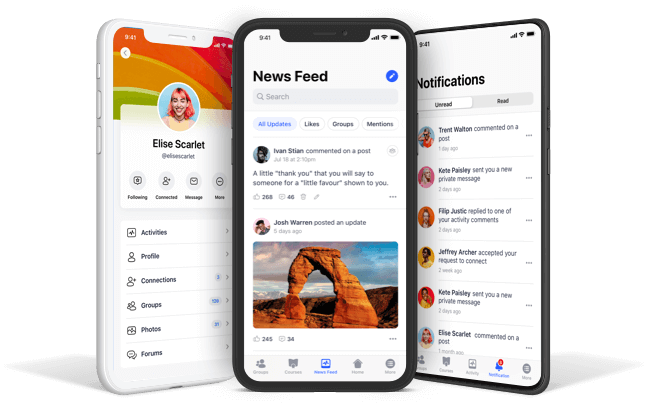Seeing your name with a friendly greeting alongside content that’s relevant and interesting – it’s a simple thing that goes surprisingly far toward making you feel included.
That feeling that you’re part of the process is crucial in online training, because it puts you at the heart of your own learning journey. Personalization, though, now goes so much further than the simple “name drop” approach. A learner should expect to see their own learning path, with content and features aligned to their own training needs. Your mLearning strategy should focus on providing personalized, interactive content that can be viewed anytime, on any device.
Ready to get personal with your learners? Then read on…
Bringing “you” back into the learning experience
If you’re pursuing mLearning, then you already know that there are huge benefits in terms of course completion. Mobile provides flexible learning options that your learners have never experienced before.
When you started your career, were you still travelling to training courses in dull hotel conference rooms? Did that text-based, role-play heavy approach embed new skills for you? It’s likely you’ve forgotten most of it. What you did get, though, was a human being interacting with you, answering your questions and making you feel involved.
For all the benefits we gain from taking the learning experience online, the personal touch was harder to bring back into the process. But no more – mobile learning technology puts you right back in touch with your learners.
When you feel like the training course you are taking was selected to further your own personal development, in line with your previous experience and future goals, you are far more likely to engage and participate fully. You’re not one of many in a training room – and you aren’t a number on an online training course report. You’re – uniquely – you.
Personalization – done right
There are always limits in terms of time and budget that mean you can’t necessarily fit in every personalization feature available to you. So, what are the top priorities when designing a personalized eLearning strategy?
- Training Needs Assessment. Set up a quick pre-training test, which will inform certain aspects of the content. You can then tailor the content to match the results – for example, stream a video that addresses one of the gaps highlighted.
- Useful user profiles. Make your user profile work hard for you. As well as filling in that personal greeting, it should inform a personal learning path, training history, to-dos, badges earned and average score. You could also let your learner choose an appropriate avatar, or amend font or text size, at the front-end.
- Role-specific training. Whilst you’re using that user profile, you can roll-out courses for specific roles, demographics or management levels. You can also provide an appropriate learning library, selected for each job role.
- Individual learning styles. Allow your learner to manage their own preferences by offering a choice of video, text or audio. Follow up with a quiz or game to check their understanding and further embed skills. This selection information is powerful to you – you can use it to analyze previous course data – what approaches led to higher completion rates or highest scores? You can then target certain learners or groups with relevant games, videos, simulations or scenarios, depending on what has proven most successful.
- Social learning. Give learners the ability to connect with peers before, during and after via forums or discussions. They can develop their knowledge by asking questions of peers, trainers or SMEs via personal or group messaging tools. Another bonus feature would be integration with their own external social media profile (such as Twitter, or LinkedIn).
- Two-way feedback. Provide feedback to the learner on their success and where they could focus future training, including links to other relevant courses. Give learners feel-good recognition in the form of customized certificates or badges. Importantly, allow the learner to provide feedback to the course developer on content, style or feature improvements.
Personalization for greater collaboration, engagement and investment
When you know what your learners need, you can design better resources for them.
The personalized approach doesn’t only provide a more inclusive experience for learners. It allows organizations to create learning programmes that are tailored to meet the development needs of a whole range of employees. By enabling choice of learning styles, and creating the ability to track and analyze those choices, decisions about where to invest L&D budget in terms of technology are well-informed. As learners feel more empowered, they engage more fully in their own development process. Their relationship with managers and mentors improves, their skills increase, and they feel a greater connection with the organization and its values.
A learner-centric approach is the cutting edge of all training and is most powerful when, via mLearning, it is put in the hands of individuals.
Personalization is a concept often incorporated in gamified courses, when they feature achievements and unlockable rewards. For more on gamification, check this blog item.









